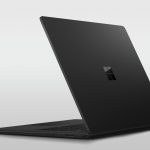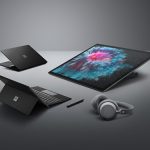Qualcomm is talking up their new chipsets; the company has announced its 60GHz Wi-Fi chipsets.
Qualcomm Technologies’ new QCA64x8 and QCA64x1 are available now, according to their Oct. 16 news release.
As these are 60GHz WiFi chips, expectations are for you to notice a better VR experience all round. “Immersive” and “wireless” are two of the words being thrown into the VR mix as a result. In fact, Paul Lilly in HotHardware seems to be on to a bigger-picture view as to what Qualcomm has in mind with the newcomers.
Lilly said “the new chipsets aren’t really intended for home routers, but could end up in virtual reality and augmented reality devices.”
Specifically, Qualcomm listed the chipsets and their uses as (1) QCA6438 and QCA6428 for infrastructure and fixed wireless access; (2) the QCA6421 and QCA6431 for mobile.
Imad Khan in Engadget said, “even the best internet that can be found in most major US cities tops off at around 1Gbps.”
The chipsets, the QCA64x8 and QCA64x1, make use of the new IEEE standard, bringing with it “theoretical speeds that can surpass even most types of home Ethernet connections.”
The 802.11ay factor is quite important and the company headlined its “60GHz 802.11ay Solutions.”
IEEE Spectrum said more about the new standard: “802.11ay improves upon the 2014 standard 802.11ad, which laid the groundwork for 60-GHz Wi-Fi.”
Qualcomm Technologies is the first to market with a 60GHz Wi-Fi solution with optimizations based on the 802.11ay specification. Another point about that 802.11ay standard is that it makes VR sense. Your current high end headset may need a wire tethered to your computer, but these chips will make a difference. Khan said, “as long as the user is close to their computer, there will be no need for wires.”
Power efficiency was another talking point at launch.
Michael Koziol in IEEE Spectrum said that “A 60-GHz router could also theoretically be more power efficient, since it will take far less time for uploads and downloads, meaning it can spend more time in power-saver mode.” Qualcomm talked up the chipsets as setting the industry low-power benchmark for extended device battery life. Translation: high power efficiency to extend battery life.
Qualcomm also said signature attributes of 60GHz Wi-Fi were that the chipsets enable always-on ambient Wi-Fi sensing capabilities, for devices to identify people, objects, movements and location without being affected by light conditions.
OK, now for the downside. The WiFi 802.11ay standard used at 60GHz has limitations, namely problems penetrating walls. Lilly in HotHardware: “60GHz WiGig is a short range wireless technology that isn’t great at penetrating obstacles like walls.”
That said, Koziol reported that Qualcomm still sees potential, quoting Caleb Banks, a senior manager of product marketing at Qualcomm. “60-GHz Wi-Fi has lots of great applications, if you have line of sight,” said Qualcomm’s Banks. He said that included high-speed downloads and emerging uses, such as Wi-Fi sensing to detect people and gestures using millimeter waves.
According to the IEEE Spectrum article, Banks said the chipsets will be interoperable with 60-GHz Wi-Fi devices on the market today, “despite being built on different standards.”





Recent Comments